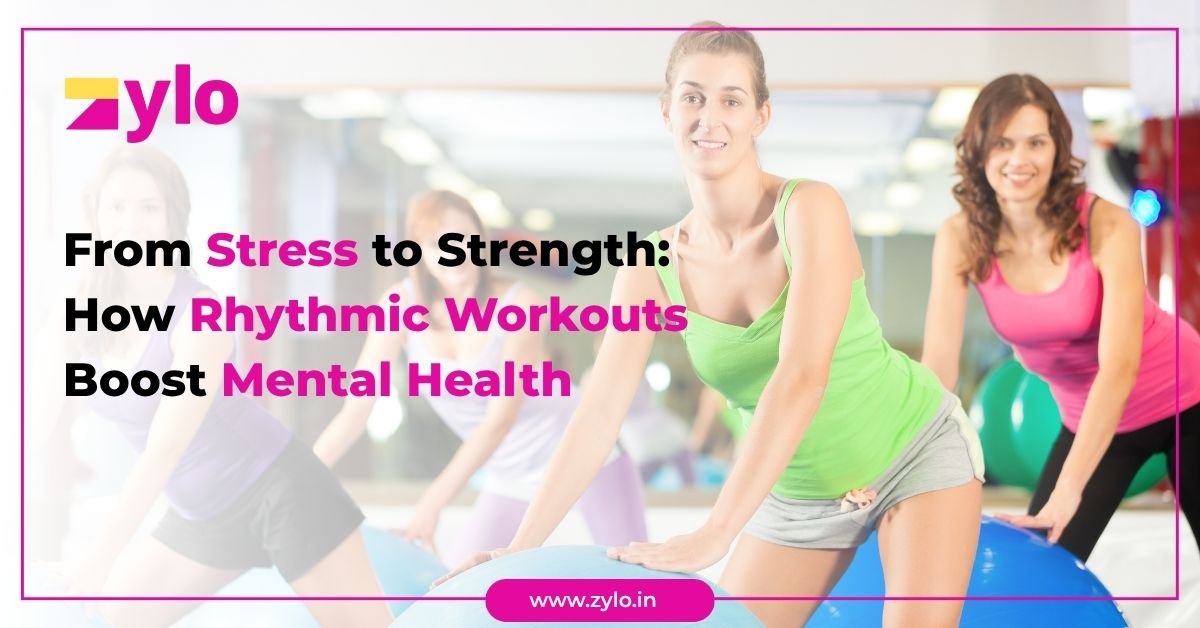In today’s hyper-connected, fast-moving world, stress has become more than a passing feeling — it’s an everyday reality for millions. While therapy, mindfulness, and medication play essential roles in mental well-being, there’s another powerful and natural solution gaining recognition: rhythmic workouts. Whether it’s dance cardio, Zumba, aerobics, or any music-based movement, rhythmic exercise is proving to be a dynamic path from stress to strength — both mentally and physically.
Let’s dive into the science and soul behind why rhythmic workouts are becoming a preferred solution for boosting mental health and emotional resilience.
1. The Science of Movement and Mood
It’s no secret that exercise helps with stress. But rhythmic workouts in particular — which sync body movements with beats and flow — stimulate the release of several “feel-good” chemicals in the brain:
- Endorphins: Natural painkillers and mood enhancers.
- Dopamine: Associated with reward and pleasure.
- Serotonin: Helps regulate mood and anxiety.
- Norepinephrine: Boosts alertness and reduces fatigue.
Even a 20-minute dance session can significantly improve mood, reduce feelings of anxiety, and offer a refreshed mental state. And the rhythmic aspect—repetition, beat, flow—creates a meditative, calming effect that strengthens mental focus while lowering stress hormones like cortisol.
2. Stress Release Through Expressive Movement
Rhythmic workouts offer something more than just calorie burn — they allow for emotional release. When you dance, move, and flow with music, your body finds a language to express emotions that words often can’t capture. Anger, anxiety, sadness, and even joy — all can be channeled through movement.
Unlike traditional workouts that may feel mechanical, rhythmic exercises offer:
- Creative freedom
- Personal expression
- A sense of rhythm that reconnects you with your body
This emotional expression helps individuals process feelings, release tension, and develop a better relationship with their bodies and minds.
3. Rhythmic Structure = Mental Structure
One of the underrated benefits of rhythmic workouts is how they mirror mental discipline. Just like rhythm relies on pattern and timing, our mental well-being thrives on structure and routine. Following a beat, learning choreography, or even repeating a flow creates a predictable, safe rhythm that your brain can follow.
This rhythm:
- Builds cognitive focus
- Encourages mind-body synchronization
- Promotes a meditative state through repetitive movement
As you move in rhythm, your brain enters a focused state similar to meditation — often called “flow.” This flow state quiets anxious thoughts, stabilizes mood swings, and improves clarity.
4. Building Confidence Through Mastery
Mental health is deeply tied to self-esteem. When we feel strong, capable, and competent, we feel emotionally resilient. Rhythmic workouts — especially those that involve learning sequences — offer a clear path to mastery.
You begin by learning a few steps. Then, you perform them fluidly. Over time, you see improvement. That sense of growth and progression is powerful.
This kind of movement:
- Builds body awareness
- Increases confidence
- Encourages goal-setting and achievement
Every time you finish a routine, you prove to yourself that you’re capable. And that confidence spills over into other parts of life — work, relationships, and self-image.
5. Social Connection & Community Support
Humans are wired to connect. And movement, especially when shared, enhances that bond. Whether you’re taking part in a live dance class, joining a virtual Zumba session, or following an online dance coach, rhythmic workouts create a sense of community — even through a screen.
Thanks to platforms offering online fitness training, people can join live-streamed or on-demand rhythmic workouts from anywhere in the world. These platforms often include community groups, weekly challenges, and shared progress tracking — all of which help people stay accountable and feel supported.
In times of isolation or mental distress, this social aspect becomes a vital emotional anchor.
6. Mindfulness Without Stillness
Mindfulness is often associated with stillness — meditation, breathwork, etc. But rhythmic workouts offer a unique kind of active mindfulness.
When you’re dancing or moving to music:
- You’re fully present.
- Your mind isn’t worrying about the future or replaying the past.
- You’re focused on beat, movement, breath, and space.
This state of presence brings many of the same benefits as traditional mindfulness practices: reduced stress, better focus, enhanced emotional regulation, and deeper awareness.
For those who struggle with sitting still, rhythmic workouts are a powerful alternative to conventional meditation.
7. Regulating the Nervous System
The nervous system plays a key role in mental health. When we’re stressed or anxious, our sympathetic nervous system (fight or flight) is overactive. Rhythmic movement helps activate the parasympathetic nervous system — the “rest and digest” state.
Through consistent rhythmic movement, your body begins to:
- Lower heart rate
- Reduce blood pressure
- Improve digestion
- Calm the mind
Combined with music — which also influences the nervous system — these workouts can regulate emotional reactivity, improve sleep quality, and ease chronic stress responses.
8. Accessible and Customizable for Everyone
One of the best things about rhythmic workouts is that they are for everyone. Whether you’re a fitness beginner, recovering from injury, struggling with anxiety, or just need a daily energy boost — there’s a rhythm that works for you.
You don’t need fancy equipment or a gym. Just music, space, and willingness.
With options like:
- Low-impact dance workouts
- Chair-based rhythmic movement
- Breath-based flow cardio
- Online Fitness Training sessions with structured guidance
…you can tailor your workout to your energy level, physical ability, and emotional state.
9. Making it a Daily Ritual
Consistency is key to both fitness and mental wellness. Here are a few tips to make rhythmic workouts a daily habit:
- Set a fixed time each day — morning dance, midday shakeout, or evening unwind.
- Create a playlist that makes you want to move.
- Start with just 10 minutes — enough to shift your mood.
- Join a program that offers structure and progress.
- Track how you feel after each session to stay motivated.
Over time, this daily ritual becomes more than a workout — it becomes a lifeline.
Final Thoughts: From Surviving to Thriving
Mental health is not just about surviving difficult moments — it’s about building a life filled with strength, joy, resilience, and presence. Rhythmic workouts offer a bridge between body and mind, allowing you to move through stress, dance through discomfort, and find clarity through flow.
Incorporating online fitness training into your routine makes these workouts even more accessible. With guided sessions, supportive communities, and flexible scheduling, it’s never been easier to take charge of your emotional and physical health — right from home.
So the next time life feels overwhelming, hit play, move to the rhythm, and let your body guide you from stress to strength.



